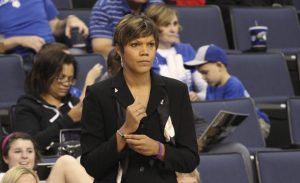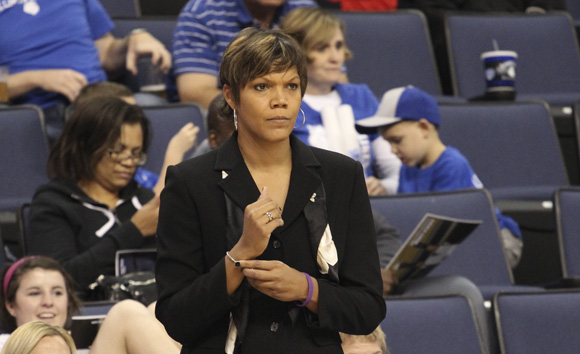
As the camera fades in on the 2006 version of the Saint Louis University women’s basketball team, the audience realizes just how far the squad has come. The camera focuses on a team getting blown out in the aging West Pine Gym, a team soon in pieces as the athletic director and coach are ousted.
“This isn’t ‘Hoosiers,’ not even close,” Coach Shimmy Gray-Miller says with about 20 minutes left in the documentary “The Gray Seasons,” leaving any hopes of a Jimmy Chitwood-like ending with the opening credits.
“The Gray Seasons” is a critically acclaimed documentary that has travelled to film festivals across the country, picking up multiple awards along the way. The film made its St. Louis debut at the St. Louis International Film Festival on Nov. 15.
It follows the Billiken women’s basketball team during Gray-Miller’s first four seasons, from 2006-2010. Gray-Miller inherited a momentous rebuilding project, as the Billikens have consistently had one of the worst women’s basketball programs in Division I.
The documentary is entirely in grayscale, adding a dramatic and melancholy undertone to a largely unfinished and — to this point — heartbreaking story.
About 30 minutes into the film, I found myself avidly cheering for the Billikens as game film was played from an Atlantic 10 Conference tournament game. Later, as the referees made terrible calls against the Billikens, robbing SLU of an upset over Xavier, I found myself firmly grabbing the armrest, wanting to scream out at the officials.
The beauty of “The Gray Seasons” is not just its cinematic production, which is brilliant, but also the ability of the director, Robert T. Herrara, to seamlessly integrate many personalities and storylines into one big picture.
The story of Gray-Miller’s first recruiting class is particularly highlighted in the film, as the class of four is eventually whittled down to two. The team is hit by a seemingly constant barrage of transfers, injuries and girls who quit.
As the Billikens become a team everyone can relate to, every small victory puts a smile on audiences’ faces, After seeing them struggle year after year, game after game, every jump ball SLU wins feels like a victory.
After introducing the characters and drawing in the audience, the Billikens find themselves with a few more fans in the theatre, cheering every victory and lamenting every defeat.
“If you put your effort and concentration into playing to your potential and being the best you can be, I don’t care what the scoreboard says,” Gene Hackman’s character says to his team in “Hoosiers.”
It’s hard not to root for a team and a coach after watching the hours of work put into every game.
When Theresa Lisch forgoes her senior year to get married, it becomes apparent that this team is not playing basketball to accumulate accolades or championships; they are playing for sheer love of the sport.
“I love basketball. I just love him more,” Theresa says of her fiancé.
It is impossible not to root for a team that loves the game and pours its heart into every play. After so much practice and preparation, everyone deserves a win.
The document ends with the question, “Is winning everything?”
Gray-Miller repeats the question aloud a few times, then leaves the question unanswered, asking, “After watching all this?”
“The Gray Seasons” leaves the audience asking the same question.










